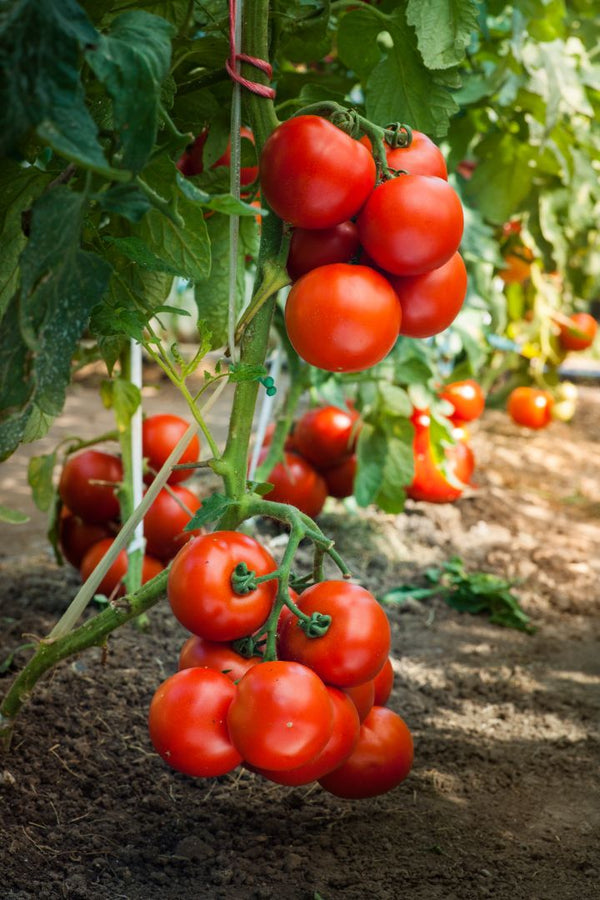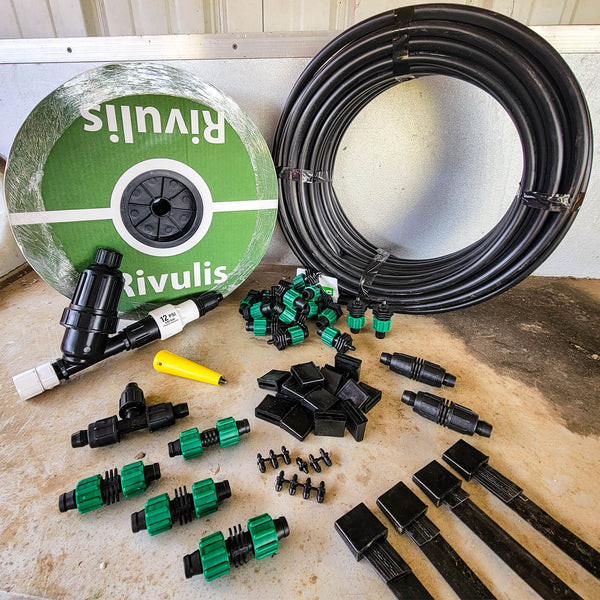
A Vast Variety Of Tomatoes
Because the world of tomatoes is such a vast one, figuring out what is the best variety and type for you really comes down to preference, use, and location. While you can absolutely grow tomatoes from plants, we always prefer starting tomato plants from seed. Growing tomatoes from seed gives you the opportunity to have access to unique varieties that commercial growers otherwise don’t as well as the ability to experiment with different types to see what grows best in your garden.

Hybrid and Heirloom Tomato Plants
If you’ve ever explored the world of growing your own vegetables, you’ve no doubt heard the terms hybrid and heirloom. Heirloom tomatoes are varieties that have not been crossbred for 40-50 years or more. These varieties can be passed down through generations and keep their characteristics through those generations because of the careful planting to prevent cross-pollination.
Hybrid varieties have been specifically bred to have characteristics that are desirable to the grower. These characteristics can be anything from size, color, flavor, or disease resistance. When planting a hybrid variety, you have a much better idea of the characteristics of the fruit that the plant will produce. Most people tend to be much more successful planting hybrid tomatoes because of their improved disease resistance.
So which type of tomato do you plant?
Well, we recommend both. Heirloom tomatoes will have an unexpected yield typically, but what you do get is not only special because of its history, but the flavor is phenomenal. Hybrids are tried and true and will give you a great crop that is reliable. Plant both types and experiment with multiple varieties.

Determinate and Indeterminate Tomato Plants
When purchasing tomato seeds, you will see them usually labeled either determinate or indeterminate. This refers to the tomato plant’s growth habit and will play an important role in choosing the best tomato plant for you.
Indeterminate tomato plants are known commonly as vining tomatoes because they tend to grow upwards sometimes reaching heights over 10 feet tall. They will also produce and set fruit throughout the growing season until frost eventually kills the plant. Because of their size and weight, indeterminate tomato plants have to be supported by using heavy-duty tomato cages or stakes.
Determinate tomato plants grow more as a bush style and have smaller plants that are 4 – 5 feet tall. This variety produces in 3 stages over a 4 week period usually so making sure to support them with trellising or cages is important because when the tomatoes do produce, it happens relatively quickly and the stalks will need the extra support.













































